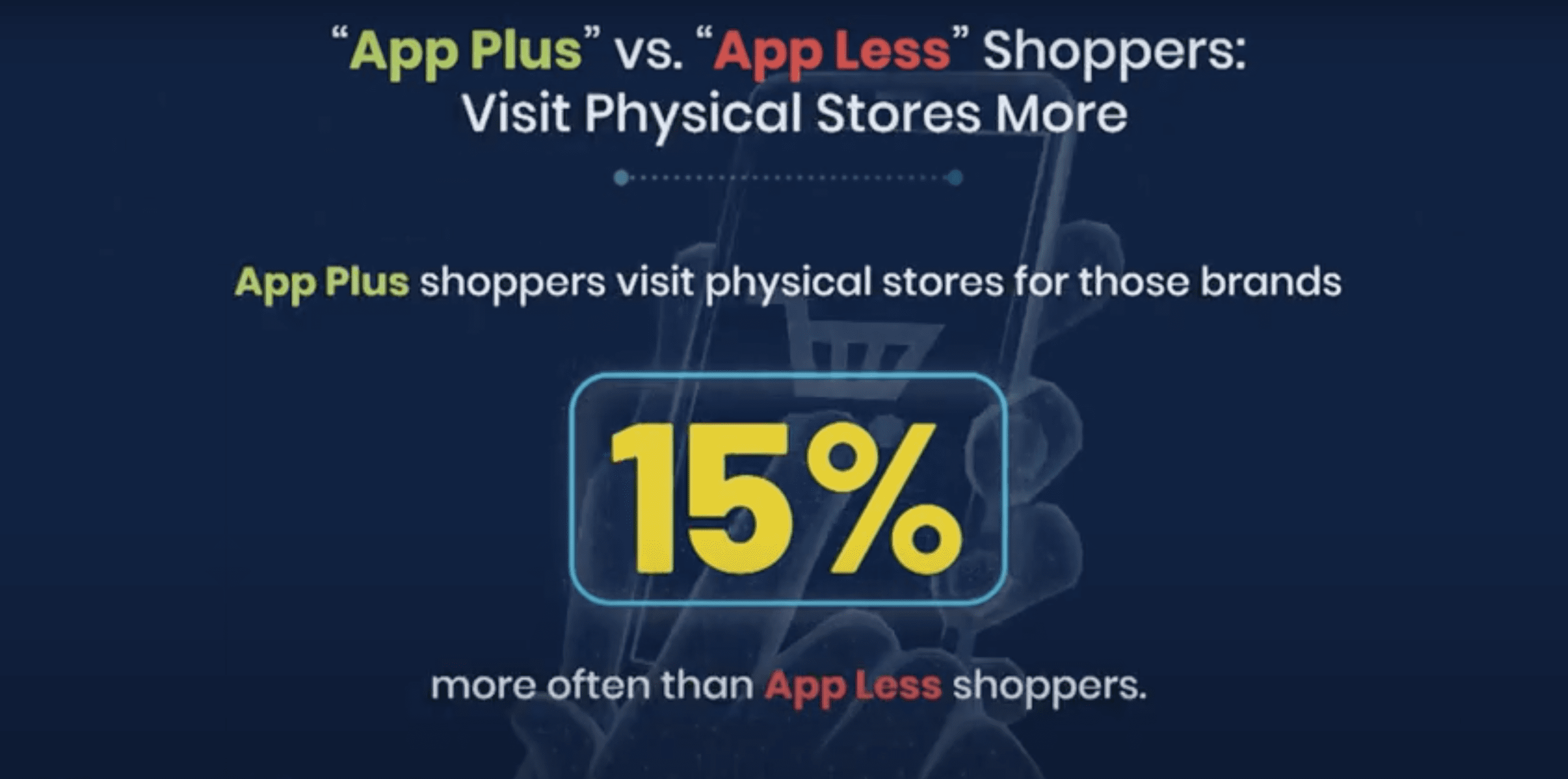- Consumer Research
- Media Consumption & Trends
- Understanding Consumers
Why Retailers With a Clear App Strategy Will Win in This Market

Retail brands have an especially tough road in front of them – and that’s even before considering the damage wrought by COVID-19. E-commerce, fast-shifting consumer habits, mobile showrooming, rising costs and more have all dramatically upended the retail landscape.
So what can retailers do to more effectively ensure their survival despite these short-term and long-term trends? Increasingly, the answer lies in mobile apps.
The Many Benefits of Retail Mobile Apps
The stores that have apps will drive higher sales versus their app-less competitors. After all, if someone is willing to take the step to download a brand’s app, they’re likely already a loyal customer.
Apps provide a seamless consumer experience, enabling customers to effectively leverage deals, conduct research and place orders either for in-store pickup/ curbside pickup or for delivery. Consumers today appreciate choice, and apps provide retailers with the ability to provide their customers with options that suit them and their unique needs and buying habits.
Another great advantage of having users with their app on device, beyond providing options to have a direct one-on-one conversation, is to also provide offers and discounts as part of a larger effort to receive direct, quality feedback. This combination of direct and indirect feedback can help app publishers and developers gain a much deeper understanding of their customer base.
Understanding App Users
It’s important for retailers to understand that apps are not just for highly niche, highly technical audiences. Today, everyone uses apps – and expects to use apps when advantageous. According to eMarketer, adults in the U.S. spend more time using mobile devices than they do watching television, and the vast majority of this time on mobile is devoted to apps.
InMobi’s own research on this topic bears this out as well. As our first-party mobile data reveals, people across genders, locations, income levels and interests are all devoted app owners and users. Increasingly, if not’s a question of whether someone uses apps but rather which apps they use.
App Users and In-Store Footfall
What makes someone more likely to visit a brand’s physical locations? According to our research, it all comes down to app ownership. In fact, we found that someone with a brand’s app is 15% more likely to visit their brick-and-mortar shops compared to non-app owners.

In the summer of 2019, InMobi turned to its first-party mobile data to look at the customers of 20 major brands within the quick-service restaurant (QSR), coffee, pharmacy and retail grocery spaces in the U.S. We passively observed well over 117,000 store locations across the country and around 9.5 million physical store visits.
The differences between app owners and non-app owners in relation to in-store visits was especially stark in the retail, grocery and pharmacy spaces. Pharmacy app owners visit physical locations close to 21% more often than those without the app, while the percentage is over 19% in retail. Major coffee chain app owners visit those physical locations over 13% more often than those without the app, while the percentage is over 11% in the QSR space.
These findings make sense. After all, if someone is willing to take the step to download a brand’s app, then they’re also likely to already be a loyal customer predisposed to buying from that outlet.
But for brands, it’s critical to understand the extent to which app ownership corresponds with in-store traffic. Today, it has become increasingly difficult to drive in-store footfall – and this was true before COVID-19. As this data clearly shows, apps are one of the surefire ways brands can continually engage with their customers and get them to frequent brick-and-mortar stores.
For some companies, especially supermarkets and pharmacies along with brands that rely on sales from these locations, it’s still critical to drive footfall. These stores are open and rely on in-person visits even today.
While driving people to physical locations might not be possible for brands right now due to current realities, those with apps have a place for users to continue to engage with them even with physical storefronts closed. Apps are also a key avenue for directly offering curbside pickup and home delivery.
People who have downloaded a brand’s app on their device are more loyal than those without. Users with a brand’s app on their device spend more time engaging with the brand on their phone.
Understanding App-Less Consumers
What about those without the apps? According to our earlier research, the top reason people said why they don’t have QSR apps is because they prefer to buy things physically.
Of course, it’s important to remember that this research was conducted before the spread of novel coronavirus in the U.S. As more recent InMobi research highlights, brands that have a distinct app strategy can carve out space for themselves today.
For example, Shipt, the e-commerce delivery app from Target, saw a surge in new installs in March 2020, which is enabling them to more effectively compete with grocery store chains, other big box retailers like Walmart and e-commerce giants like Amazon.
Winning Retail Consumers Today and In the Future
What can retailers do to stay relevant today as COVID-19 impacts every component of life? The answer is apps. What can retailers do to ensure continued relevance and sales in the months and years ahead? The answer is also mobile apps. As mobile become more central to how consumers find, choose and buy everything from clothing to food and everything in between, it’s critical for brands to use apps to retain market share and delight customers.
Stay Up to Date
Register to our blog updates newsletter to receive the latest content in your inbox.









